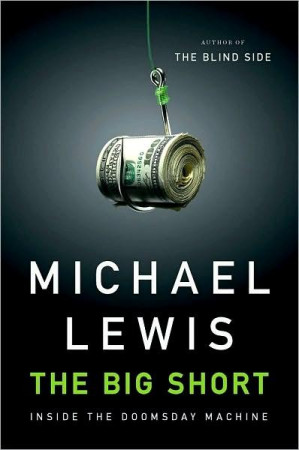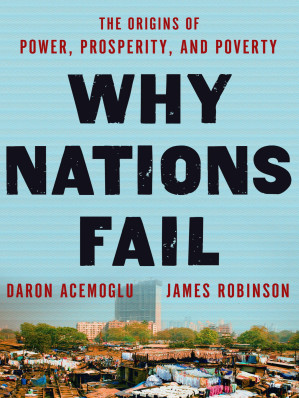Perverse incentives created a system where no one was watching the risks.
The problem wasn't that Lehman Brothers was allowed to fail. The problem was that Lehman Brothers was allowed to succeed.

Book summary
by Michael Lewis
Inside the Doomsday Machine
Story of investors who predicted and profited from 2008 crash
Topics
Read this book as both a financial thriller and a case study in systemic risk. Use Readever to highlight key insights about financial systems, behavioral economics, and risk management. After each chapter, identify parallels to modern financial markets and use the AI insights to understand how perverse incentives and complexity can create systemic vulnerabilities.
Things to know before reading
Michael Lewis tells the gripping story of the few investors who saw the 2008 financial crisis coming and made fortunes betting against the housing market. Through the eyes of these unconventional thinkers, he reveals the systemic failures, perverse incentives, and willful blindness that led to the greatest financial collapse since the Great Depression.
Lewis's narrative reveals how perverse incentives, complexity, and groupthink blinded Wall Street to massive risks while a few outsiders saw the impending collapse clearly.
The problem wasn't that Lehman Brothers was allowed to fail. The problem was that Lehman Brothers was allowed to succeed.
The CDO was, in effect, a credit laundering service for the residents of Lower Middle Class America.
The subprime mortgage market had a special talent for ignoring the facts.
Ready to continue? Launch the Readever reader and keep turning pages without paying a cent.
This summary reveals the structural flaws in the financial system that allowed the crisis to happen, the psychological biases that prevented most people from seeing it coming, and the lessons for identifying and managing systemic risk in today's markets.
Key idea 1
The problem wasn't that Lehman Brothers was allowed to fail. The problem was that Lehman Brothers was allowed to succeed.
Mortgage brokers earned fees for originating loans regardless of quality. Investment banks earned fees for packaging mortgages into complex securities. Rating agencies were paid by the banks whose products they rated. Everyone had incentives to keep the machine running, nobody had incentives to question its soundness.
Remember
Key idea 2
The CDO was, in effect, a credit laundering service for the residents of Lower Middle Class America.
Collateralized Debt Obligations (CDOs) bundled risky mortgages into complex securities that rating agencies mistakenly labeled as safe. The complexity made it nearly impossible for investors to understand the underlying risks, creating a false sense of security.
Remember
Key idea 3
The subprime mortgage market had a special talent for ignoring the facts.
The heroes of Lewis's story—including Steve Eisman, Michael Burry, and Greg Lippmann—were outsiders who questioned the prevailing wisdom. They did their own research, understood the products better than their creators, and had the courage to bet against the entire financial establishment.
Remember
The Big Short tells the human story behind the 2008 financial crisis through the experiences of the few investors who saw it coming. Lewis follows these unconventional thinkers as they discover the rot in the subprime mortgage market, struggle to find ways to bet against it, and ultimately profit from the collapse they predicted.
The book explains complex financial instruments like mortgage-backed securities, CDOs, and credit default swaps in accessible terms, showing how they were supposed to manage risk but instead amplified it. Through vivid character portraits and clear explanations, Lewis makes the arcane world of high finance understandable and compelling.
Open Readever's reader to highlight passages, ask the AI companion questions, and keep exploring without paying a cent.
Lewis combines masterful storytelling with sharp financial analysis, making complex topics accessible while maintaining narrative drive. While some critics argue he oversimplifies certain aspects of the crisis, the book succeeds in revealing the human drama and systemic failures behind the collapse. Its adaptation into an Oscar-winning film testifies to its powerful storytelling.
Investors and financial professionals wanting to understand systemic risk.
Business leaders concerned about market bubbles and risk management.
Students of finance, economics, and business.
Anyone interested in understanding how financial crises happen.
Michael Lewis is one of America's most successful nonfiction writers, known for his ability to explain complex financial topics through compelling human stories. His previous books include Liar's Poker, Moneyball, and The Blind Side. His background as a Salomon Brothers bond trader gives him unique insight into Wall Street culture and practices.

Thomas Piketty
Landmark study on wealth inequality and capital dynamics globally

Acemoğlu & Robinson
Nations succeed or fail based on inclusive vs extractive institutions

Banerjee & Duflo
Nobel winners use experiments to rethink global poverty solutions
Build your personalized reading stack
Download full-length ePubs in one click with personal cloud storage.
Blend AI-guided insights with tactile note-taking to accelerate reflection.
Follow curated reading journeys tailored to your goals and time budget.
Sync highlights across devices so lessons stick beyond the page.
Sign in to Readever to keep reading with AI guidance, instant summaries, and synced notes.
The Big Short serves as both a gripping financial thriller and a cautionary tale about systemic risk, perverse incentives, and the dangers of groupthink. While telling the story of a few investors who saw the crisis coming, it reveals fundamental flaws in the financial system that remain relevant for understanding modern markets.
The Big Short serves as both a masterclass in financial storytelling and a sobering lesson in systemic risk. By following the few individuals who saw the crisis coming, Lewis reveals how perverse incentives, complexity, and groupthink can blind entire industries to obvious dangers.
The book's enduring value lies in its demonstration that financial crises are not random events but predictable outcomes of misaligned incentives and flawed systems—and that independent thinking and rigorous analysis can sometimes see through the collective delusion, though doing so requires both insight and courage.
Start reading The Big Short for free and unlock personalized book journeys with Readever.